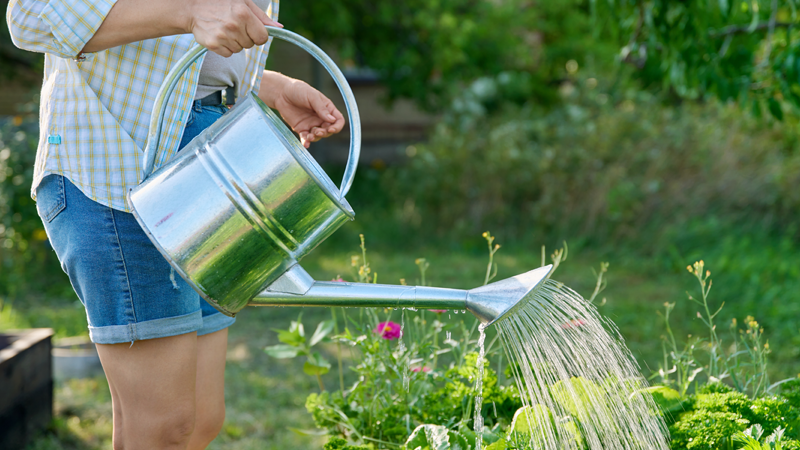The A to Z of using water wisely
Posted: 16 July 2025
Did you know the average household uses around 140 litres of water each day, much of which is wasted?

Rising demand, driven by factors such as climate change and a growing population, is putting more pressure on our water resources. But by making small, mindful changes, we can all play a part in using water more wisely.
To make this simple, here’s an A–Z guide filled with practical tips to help individuals and households reduce water use and ensure there's enough for everyone, now and in the future.
Appliances:
Choose water-efficient dishwashers and washing machines. For an energy efficient cycle, switch to eco mode.
Baths: On average, a full bath uses around 80 litres of water, so run less water or swap your bath for a four-minute shower.Cisterns:
Older cisterns can use up to 13 litres per flush. If you have an older model, consider installing a water-saving device like a 'Hippo' or a 'Save-a-Flush' device.
Dripping taps: A dripping tap can waste enough water in a day to fill a bath. Replace tap washers when they become worn.
Egg-boiling water: Your plants will thrive if you reuse egg-boiling water for its calcium and eco-friendly benefits. Crushed shells make great fertiliser too!
Full loads: Always run dishwashers and washing machines with a full load. That simple change can help you cut out excessive waste and conserve water.
Grey water: Grey water is wastewater from showers, baths, and wash basins that, if treated correctly, can be used for flushing the toilet, watering gardens and washing cars. Grey water recycling systems can now be purchased from many DIY stores.
Hosepipes: Use a watering can instead of a hosepipe. Did you know, the average hosepipe can use as much as 1,000 litres an hour - enough water to have 12 baths, or 20 showers!
Insulation: Make sure all hot and cold-water pipes and tanks are insulated, especially in unheated areas. Insulating hot water pipes can also reduce fuel bills.
Jet washers: Use sparingly and only when necessary to avoid excessive water use.
Kettles: Having a cuppa? Boil only the amount of water you need to save water and energy.
Lawns: Let lawns go brown during dry and sunny periods. They’ll be sure to bounce back after some rain!
Meters: Install a water meter to monitor and control your usage. Not sure if you have a meter or want to find out more about switching to one? Visit: How to switch to a water meter | South Staffs Water
Nozzle: Use a spray nozzle on hoses to better control water flow and minimise unnecessary waste.
Overflow: Check toilet cisterns and tanks to make sure they aren’t overflowing.
Plants: Water plants early in the morning or late in the evening to reduce evaporation.
Quick showers: Keep showers under four minutes—try finishing before your favourite song ends!
Rainwater: Collect rain in a water butt for garden use. The average roof collects 85,000 litres of rain a year, that's enough for 450 water butts!
Smart thinking: Take a quick quiz to find out how you use water in your home and how you can take control of your water use by receiving tailored quick wins and water- saving freebies.
Tools: Handy devices can help save water across your home. Think leaky loo strips and universal sink plugs. Visit: Get Water Fit | Free water-efficiency devices to find out more.
Usage: Use water wisely. Pause before turning on the tap and consider your usage. Every drop matters.
Vehicles:
Wash your car with a bucket and sponge rather than a running hose.
Washing: Use a bowl when washing up dishes instead of a running tap. You can save about five litres of water per wash in this way.
Xeriscaping: Landscaping with drought-tolerant plants, using efficient irrigation, and other water-wise techniques are all helpful ways to save water.
Your habits: Be mindful of your habits. What small daily changes to your water usage can you make?
Zero waste: Aim to eliminate unnecessary water waste wherever you can.
Water-saving tips
Find out how small changes in your water use can make a big difference.

